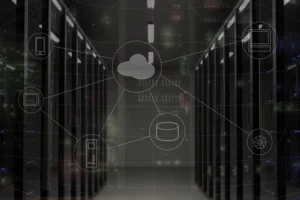
As working from home or remote work becomes more popular, businesses continue to adopt cloud-based technology more and more. Because of this trend, customers are looking for faster and more accessible tech innovations.
The constant push for progress is changing the ways people use and support the cloud in 2022, from the nitty-gritty details of its implementation to the bigger picture of its widespread potential applications.
Flexible Storage For Cloud-Native Distributions
As cloud computing becomes more achievable for businesses, storing and accessing data as efficiently as possible becomes increasingly important.
One promising storage method is block storage, which partitions data more conveniently across blocks rather than down a long, traditional file path. Block storage can store large volumes of data, but sometimes implementation is complex because most of the metadata needs handling outside of storage, perhaps in another database.
Nevertheless, storage solutions like these provide an easy way to support block storage for cloud-native distributions like Kubernetes.
Serverless Technology
Also known as Functions as a Service (or FaaS), serverless cloud technology is rising in 2022 because of the tremendous benefit to businesses that no longer need to maintain physical servers.
Serverless tech is instead pay-as-you-go, so only necessary computational power is used, yet it is always accessible.
In this way, the cloud and FaaS allow businesses to grow and shift, knowing that their resources will automatically follow suit. In addition, serverless technology brings scalability into reach for businesses of any size instead of restricting them to predetermined limits.
It’s important to note that serverless technology models are not literally serverless but rather outsource the maintenance of physical terminals to third-party vendors to free up developers’ time and efforts toward new projects.
Hybrid Cloud Models
As Rajeev Goel writes for Entrepreneur, “As a business scales, its infrastructure needs will evolve,” making it difficult for business owners to know whether to base cloud infrastructure on public or private servers.
On the one hand, public servers offer cheaper and more accessible data storage, while private servers benefit from increased control, privacy, and reliability.
Hybrid cloud technology solves this problem, leveraging both efficiency and reliability benefits of public and private servers by storing some data on both types. There is no doubt that this model will continue to gain traction as these concerns are by no means going away.
Emphasis On Sustainability
It may be tempting to think that cloud technology is inherently more environmentally friendly because physical servers are becoming less widespread. However, sustainability concerns are an emerging trend as even cloud technology uses a great deal of electricity.
Any business, especially those large enough to have a substantial environmental impact, would be wise to consider renewable energy sources for their cloud computing needs.
Climate change considerations are here to stay, and consumers will want to know that their chosen services are fulfilling their needs while also keeping an eye on their carbon footprint.
Cloud Security
Cybersecurity is a worthy concern for storing data in the cloud. Virtual data rooms secure business data and are relatively unexposed to disastrous events, but they also increase a business’s vulnerability to cyberattacks or human error regarding access permissions.
Cloud security walks a fine line between providing users with increased accessibility to the data and tools they need and restricting access to what should be kept private. In addition, cloud technology is evolving at a rate that exceeds the growth of cybersecurity tools in some ways.
In response, technologies like blockchain and Secure Access Service Edge (SASE) are rising. Also notable is the increased dependence on cybersecurity Software as a Service (SaaS) in general, which benefits businesses with extra reassurance that vulnerabilities will be found and addressed.
Edge Computing
Edge computing is an advancement in cloud computing that decentralizes data. Information from the end-user is processed and stored close by to improve the software’s performance, which is most potentially useful for real-time applications. A tiny performance improvement makes a significant impact.
Edge computing is also helpful for extensive datasets because they don’t need to be transmitted across a vast distance with edge computing. As a result, along with the rise of data science, edge computing will become a more noticeable trend in 2022 and in the years to come.
Ai In The Cloud
Artificial intelligence advances hand-in-hand with cloud computing because its high computational and data storage needs are most efficiently served via the cloud. In this way, cloud technology makes machine learning readily accessible in everyday apps whose users expect a tailored experience.
An additional benefit to the cloud is its ability to containerize code, making it platform-independent and easily shared. This increased accessibility opens up opportunities for more people to learn artificial intelligence and data science concepts. In fact, some online courses in data science already deliver their materials through the cloud, which will only increase the long-term demand for the incorporation of machine learning in everyday life.
Cloud Gaming
Video games have come a very long way since the days of Pong and simple joysticks. Now, the cloud supports gaming by making virtual and augmented reality (VR and AR) that was once the technology of far-off dreams instead of the technology of the everyday gamer. As a result, VR/AR headsets are becoming more accessible, and people can expect future increased demand for gaming in the cloud.
Furthermore, virtual and augmented reality technologies are not just for gaming. Nearly any application that involves precise visualization could benefit, from data visualization to art and design or even professional training.
Because the cloud has made this technology more commonplace, the technology, in turn, will be creatively applied, and new cloud innovations will arise to meet the unique needs.
Before You Go
Continual innovation in business is the path to future success and one way to overcome challenges, no matter what unexpected developments arise. Innovation in the cloud is no exception to this rule, and 2022 will continue to see these trends develop as businesses on the cutting edge take note and adapt accordingly.








